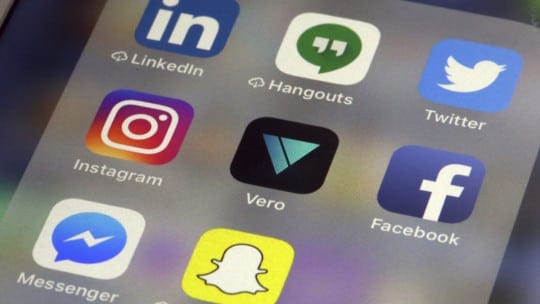
If you’re tuned into social media trends, you’ve probably heard about Vero, an emerging app aiming to compete with Facebook, Instagram, Twitter and Snapchat. Vero found near overnight popularity by offering free accounts to the first million users, making it the No. 1 social media app on iTunes within days. Vero has surpassed 1 million subs and it’s growing.
But we’ve seen this before—Meerkat, Ping, Orkut and others have dropped onto the scene as highly touted disruptors, only to disappear after the initial excitement dies. There’s no promise Vero, buzzy as it is, has staying power.
Vero’s differentiators seem unique to social media in 2018: it’s a no-ad platform without an algorithm. Its mission is to create a “more authentic” social media platform that “makes our users our customers, not advertisers.”
Vero could disappear tomorrow, yet its emergence and quick rise to popularity speak volumes about the market: Users want an ad-free social platform experience minus algorithms pushing up posts based on popularity.
What can brands learn from Vero's rise?
Be Transparent to Build Trust
As a species, human beings are averse to advertising messaging. We’re wary of “sales-y” TV, radio or digital ads. If not, would more than 1 million individuals have downloaded a social media app that’s ad-free? Although it’s true Facebook and others are getting much smarter about inserting advertising in creative and seemingly unobtrusive ways, users have matured, too.
This is why brands need to prioritize transparent messaging. That means honesty and authenticity in everything from social media posts and press coverage to web copy. Avoid portraying your brand as something it’s not. Be straightforward and truthful when it comes to your services and capabilities.
Hold your brand and executives accountable, and recognize your influence on consumers. Treat people like people, and show commercial transparency through customer service dependability. For communicators this means tweaking messaging so it’s truthful, and providing thoughtful commentary on social media, even responding to negative Yelp reviews, tweets and Facebook posts.
Listen Up
The reason Vero jumped to the top of the app charts is because it addresses the complaints social media users have with Instagram, Facebook, Twitter and Snapchat: too many ads, confusing algorithms, a pervasive business footprint and the feeling users are cultivating un-relatable brand images.
Let’s take a lesson from Snapchat, which updated its app and angered millions of users who found it difficult to navigate and not worth the trouble. Celebrity Kylie Jenner tweeted she wasn’t happy with it and its stock plummeted $1.3 billion nearly overnight.
Among many other things they desire, customers want to be heard.
With a plethora of digital metrics available, there is no excuse to ignore customer desires. If Google Analytics shows customers frequently bouncing off your site after just seconds, take time to diagnose the issues—and fix them. Listen to customers and take serious steps to repair what might be broken, even if it’s inconvenient, expensive or a lot of work.
It’s obvious consumers crave transparency. As PR pros in the digital and social space we can use this knowledge to fuel our work on and off the channels.
It will be interesting to see how these (so far) ad-free channels influence the future of digital advertising, but one thing is clear: Customers across all industries value transparency in paid and organic messaging as well as increased attention to consumer insights.
Amy Lecza is senior content marketing lead at All Points Public Relations
